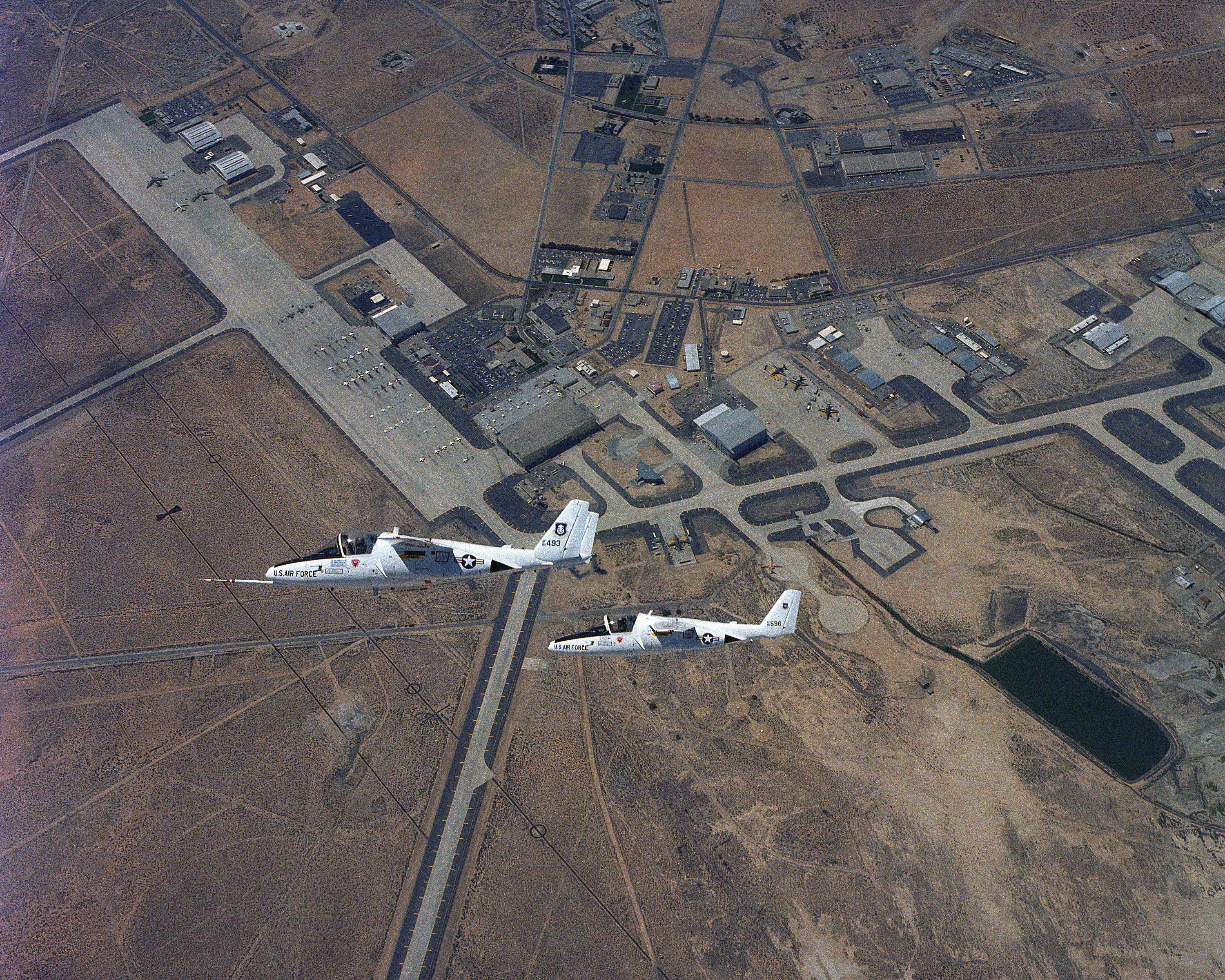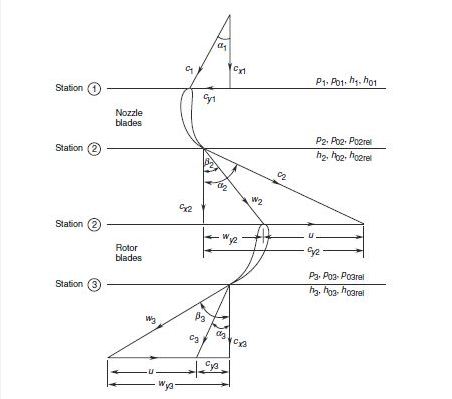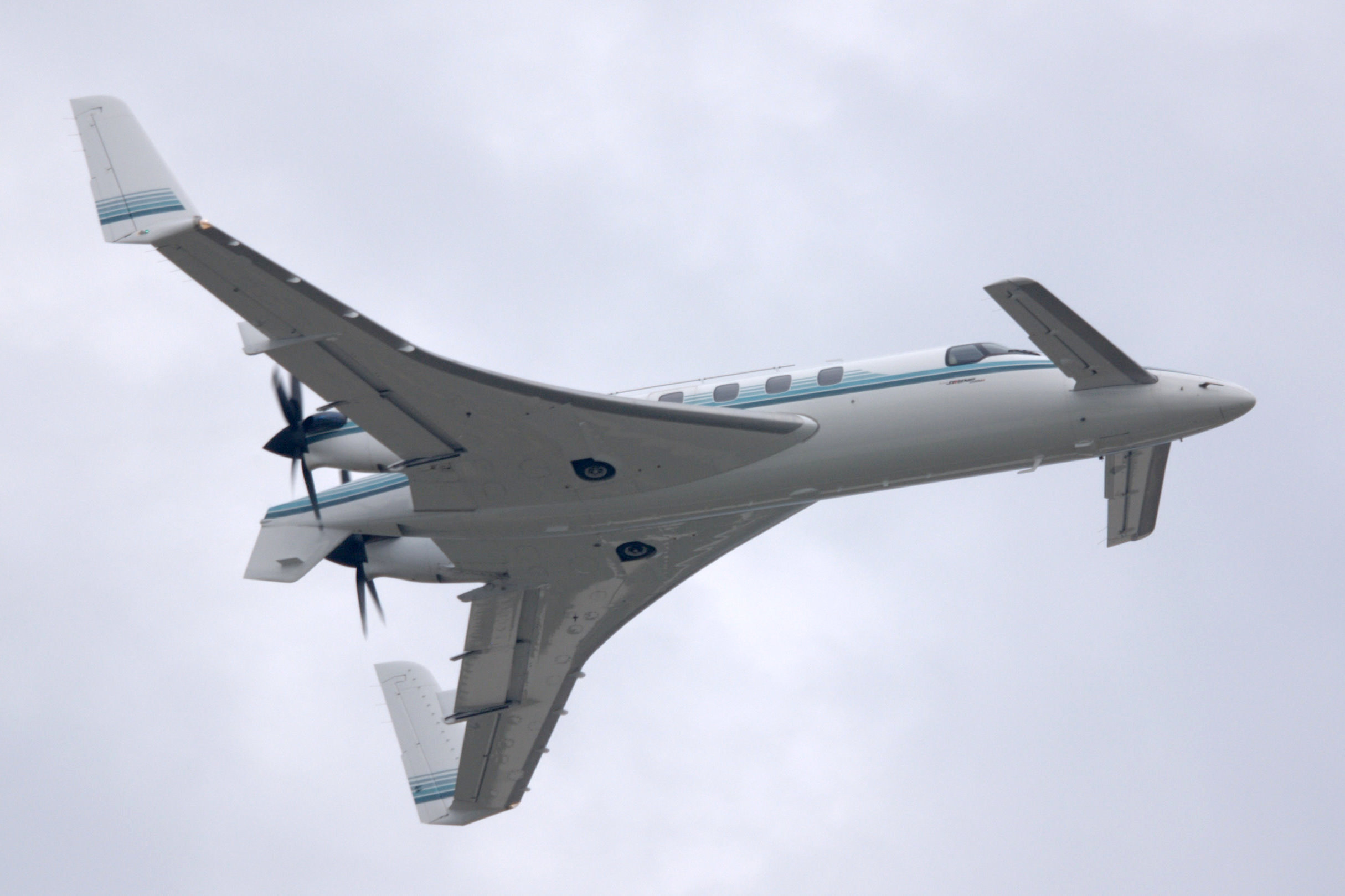|
Garrett TPF351
The Garrett TPF351 is a turboprop engine designed by Garrett Engine Division of AlliedSignal Aerospace Company. Initiated by Garrett in October 1987, the TPF351-20 engine was selected by Embraer to power the Embraer/FMA CBA 123 Vector, a high-speed commuter "pusher" aircraft. It was first tested on May 19, 1989 and then ground tested and flight tested on a Boeing 720 on July 9, 1990. The first prototype CBA 123 was tested on July 18, 1990, followed by a flight to the Farnborough Air Show in September of the same year. Both programs were cancelled in 1992, when the TPF351 was nine months from engine certification. Design It was built on the TPE331-14 which power the Jetstream 41, keeping its combustor system and high pressure turbine, already of the right size. The two-stage centrifugal compressor is scaled-up from the Garrett F109 turbofan of the Fairchild T-46 and Promavia Jet Squalus trainers. The engine ran about hotter than the TPE331-14 in the core. It was Garrett's fi ... [...More Info...] [...Related Items...] OR: [Wikipedia] [Google] [Baidu] |
WikiProject Aircraft
A WikiProject, or Wikiproject, is a Wikimedia movement affinity group for contributors with shared goals. WikiProjects are prevalent within the largest wiki, Wikipedia, and exist to varying degrees within sister projects such as Wiktionary, Wikiquote, Wikidata, and Wikisource. They also exist in different languages, and translation of articles is a form of their collaboration. During the COVID-19 pandemic, CBS News noted the role of Wikipedia's WikiProject Medicine in maintaining the accuracy of articles related to the disease. Another WikiProject that has drawn attention is WikiProject Women Scientists, which was profiled by '' Smithsonian'' for its efforts to improve coverage of women scientists which the profile noted had "helped increase the number of female scientists on Wikipedia from around 1,600 to over 5,000". On Wikipedia Some Wikipedia WikiProjects are substantial enough to engage in cooperative activities with outside organizations relevant to the field at issue. For e ... [...More Info...] [...Related Items...] OR: [Wikipedia] [Google] [Baidu] |
Fairchild T-46
The Fairchild T-46 was an American light jet trainer aircraft of the 1980s. It was cancelled in 1986 with only three aircraft being produced. Design and development The United States Air Force (USAF) launched its Next Generation Trainer (NGT) program to replace the Cessna T-37 Tweet primary trainer in 1981.Braybrook 1985, p. 274. Fairchild-Republic submitted a shoulder-winged monoplane with a twin tail, powered by two Garrett F109 turbofans and with pilot and instructor sitting side by side.Braybrook 1985, p. 275. Part of the rationale was an expectation of increasing levels of general aviation traffic. A pressurized trainer would permit training at higher altitude, leading to fewer restrictions on the new pilots. In order to validate the proposed aircraft's design, and to explore its flight handling characteristics, Fairchild Republic contracted with Ames Industries of Bohemia, New York to build a flyable 62% scale version. Burt Rutan's Rutan Aircraft Factory (RAF) in Mojave, ... [...More Info...] [...Related Items...] OR: [Wikipedia] [Google] [Baidu] |
Axial Turbine
An axial turbine is a turbine in which the flow of the working fluid is parallel to the shaft, as opposed to radial turbines, where the fluid runs around a shaft, as in a watermill. An axial turbine has a similar construction as an axial compressor, but it operates in the reverse, converting flow of the fluid into rotating mechanical energy. A set of static guide vanes or nozzle vanes accelerates and adds swirl to the fluid and directs it to the next row of turbine blades mounted on a turbine rotor. Stage velocity triangle The angles in the absolute system are noted by alpha (α) and the angles in the relative system are noted by beta (β). Axial and tangential components of both absolute and relative velocities are shown in the figure. Static and stagnation values of pressure and enthalpy in the absolute and relative systems are also shown. It is often assumed that the axial velocity component remains constant through the stage. From this condition we get, cx = c1 cos α1 = c ... [...More Info...] [...Related Items...] OR: [Wikipedia] [Google] [Baidu] |
Annular Combustor
A combustor is a component or area of a gas turbine, ramjet, or scramjet engine where combustion takes place. It is also known as a burner, combustion chamber or flame holder. In a gas turbine engine, the ''combustor'' or combustion chamber is fed high-pressure air by the compression system. The combustor then heats this air at constant pressure as the fuel/air mix burns. As it burns the fuel/air mix heats and rapidly expands. The burned mix is exhausted from the combustor through the nozzle guide vanes to the turbine. In the case of a ramjet or scramjet engines, the exhaust is directly fed out through the nozzle. A combustor must contain and maintain stable combustion despite very high air flow rates. To do so combustors are carefully designed to first mix and ignite the air and fuel, and then mix in more air to complete the combustion process. Early gas turbine engines used a single chamber known as a can-type combustor. Today three main configurations exist: can, annular, and c ... [...More Info...] [...Related Items...] OR: [Wikipedia] [Google] [Baidu] |
Centrifugal Compressor
Centrifugal compressors, sometimes called impeller compressors or radial compressors, are a sub-class of dynamic axisymmetric work-absorbing turbomachinery. They achieve pressure rise by adding energy to the continuous flow of fluid through the rotor/impeller. The following equation shows this specific energy input. A substantial portion of this energy is kinetic which is converted to increased potential energy/static pressure by slowing the flow through a diffuser. The static pressure rise in the impeller may roughly equal the rise in the diffuser. Equation-0.1 : H = \left( \left( R \right)_2 - \left( R \right)_1 \right) :where the control volume nomenclature (illustrated in Figure-0.4) is: ::* subscript, is the impeller inlet location, station1 ::* subscript, is the impeller discharge/exit location, station2 ::* is the energy input per unit mass, units=(LP/m) ::* is the impeller's rotation speed, units=(radians/t) ::* is the radius of specified location, units=(L) ::* is ve ... [...More Info...] [...Related Items...] OR: [Wikipedia] [Google] [Baidu] |
Flight International
''Flight International'' is a monthly magazine focused on aerospace. Published in the United Kingdom and founded in 1909 as "A Journal devoted to the Interests, Practice, and Progress of Aerial Locomotion and Transport", it is the world's oldest continuously published aviation news magazine. ''Flight International'' is published by DVV Media Group. Competitors include Jane's Information Group and ''Aviation Week''. Former editors of, and contributors include H. F. King, Bill Gunston, John W. R. Taylor and David Learmount. History The founder and first editor of ''Flight'' was Stanley Spooner. He was also the creator and editor of ''The Automotor Journal'', originally titled ''The Automotor Journal and Horseless Vehicle''.Guide To British Industrial History: Biographies: ''Stan ... [...More Info...] [...Related Items...] OR: [Wikipedia] [Google] [Baidu] |
Tractor Configuration
In aviation, the term tractor configuration refers to an aircraft constructed in the standard configuration with its engine mounted with the propeller in front of it so that the aircraft is "pulled" through the air. Oppositely, the pusher configuration places the airscrew behind and propels the aircraft forward. Through common usage, the word "propeller" has come to mean any airscrew, whether it actually propels or pulls the plane. In the early years of powered aviation both tractor and pusher designs were common. However, by the midpoint of the First World War, interest in pushers declined and the tractor configuration dominated. Today, propeller-driven aircraft are assumed to be tractors unless it is stated otherwise. Origins The first airplane to have a "tractor" configuration was the Goupy No.2 (first flight on 11 March 1909) designed by Mario Calderara and financed by Ambroise Goupy at the French firm Blériot Aéronautique. When it was constructed, it was the fast ... [...More Info...] [...Related Items...] OR: [Wikipedia] [Google] [Baidu] |
Piaggio Avanti
The Piaggio P.180 Avanti is an Italian executive transport aircraft with twin turboprop engines mounted in pusher configuration. It seats up to nine people in a pressurized cabin and may be flown by one or two pilots. The design is of three-surface configuration, having both a small forward wing and a conventional tailplane, as well as its main wing, with the main wing spars passing behind the passenger cabin area. Development A 1980s wave of new-generation planes, developed to appeal to Fortune 500 clients, included Piaggio's Avanti and Beech Aircraft Corp.'s very similar Starship. Engineering studies for the airplane that would eventually be named ''Avanti'' began in 1979 and designs were tested in wind tunnels in Italy and the United States in 1980 and 1981, conducted by Professor Jan Roskam from the University of Kansas (using Wichita State University's wind tunnel and Boeing's transonic wind tunnel in Seattle) along with Professor Gerald Gregorek at Ohio State Universi ... [...More Info...] [...Related Items...] OR: [Wikipedia] [Google] [Baidu] |
Beech Starship
The Beechcraft Starship is a twin-turboprop six- to eight-passenger pressurized business aircraft produced by Beech Aircraft Corporation. Development Development of the Starship began in 1979 when Beech decided to explore designs for a successor to its King Air line of turboprops that would fly faster and carry more passengers. The design was originated by Beechcraft in January 1980 as Preliminary Design 330 (PD 330). Beechcraft President Linden Blue was the executive sponsor of the project at its inception. Max E. Bleck was the Beechcraft President who oversaw its subsequent production. C.R. Stoner, head of Beechcraft’s Experimental division, was the project manager. On August 25, 1982, Beech contracted with Scaled Composites to refine the design and build an 85% scale proof-of-concept (POC) aircraft. One of the significant changes made to the design by Scaled Composites was the addition of variable geometry to the canard. The POC aircraft first flew in August 1983. ... [...More Info...] [...Related Items...] OR: [Wikipedia] [Google] [Baidu] |
Feathering (propeller)
An aircraft propeller, also called an airscrew,Beaumont, R.A.; ''Aeronautical Engineering'', Odhams, 1942, Chapter 13, "Airscrews". converts rotary motion from an engine or other power source into a swirling slipstream which pushes the propeller forwards or backwards. It comprises a rotating power-driven hub, to which are attached several radial airfoil-section blades such that the whole assembly rotates about a longitudinal axis. The blade pitch may be fixed, manually variable to a few set positions, or of the automatically variable "constant-speed" type. The propeller attaches to the power source's driveshaft either directly or through reduction gearing. Propellers can be made from wood, metal or composite materials. Propellers are most suitable for use at subsonic airspeeds generally below about , although supersonic speeds were achieved in the McDonnell XF-88B experimental propeller-equipped aircraft. Supersonic tip-speeds are used in some aircraft like the Tupolev Tu-95, w ... [...More Info...] [...Related Items...] OR: [Wikipedia] [Google] [Baidu] |
Propeller Synchronization
In aviation, propeller synchronization is a mechanism that automatically synchronizes all propellers of a multi-engine, propeller-driven aircraft An aircraft is a vehicle that is able to fly by gaining support from the air. It counters the force of gravity by using either static lift or by using the dynamic lift of an airfoil, or in a few cases the downward thrust from jet engines ... so that they rotate at the same speed. Propeller synchronization serves mainly to increase the comfort of crew and passengers, since its primary purpose is to reduce the “beats” generated by propellers that are turning at slightly different speeds. These beats can become very irritating to persons inside the aircraft after a time. Synchronization is not normally necessary for proper operation of the aircraft. Some aircraft provide a visual indicator of propeller synchronization in the cockpit. Pilots can use this indicator to decide whether or not to engage propeller synchronization ... [...More Info...] [...Related Items...] OR: [Wikipedia] [Google] [Baidu] |
Torque
In physics and mechanics, torque is the rotational equivalent of linear force. It is also referred to as the moment of force (also abbreviated to moment). It represents the capability of a force to produce change in the rotational motion of the body. The concept originated with the studies by Archimedes of the usage of levers, which is reflected in his famous quote: "''Give me a lever and a place to stand and I will move the Earth''". Just as a linear force is a push or a pull, a torque can be thought of as a twist to an object around a specific axis. Torque is defined as the product of the magnitude of the perpendicular component of the force and the distance of the line of action of a force from the point around which it is being determined. The law of conservation of energy can also be used to understand torque. The symbol for torque is typically \boldsymbol\tau, the lowercase Greek letter ''tau''. When being referred to as moment of force, it is commonly denoted by . In ... [...More Info...] [...Related Items...] OR: [Wikipedia] [Google] [Baidu] |


.jpg)

.jpg)

